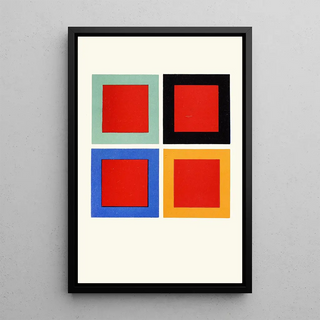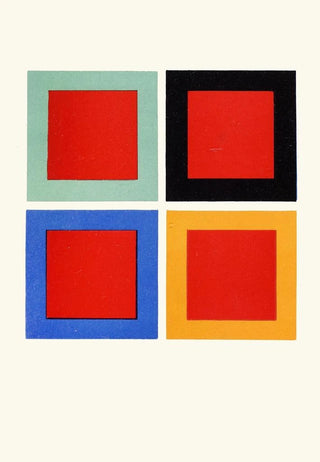Art print | Modification of the tone and hue of a color when placed on or near different colors - James Ward


View from behind

Frame (optional)
Modification of the tone and hue of a color when placed on or near different colors: a fascinating chromatic exploration
The artwork "Modification of the tone and hue of a color when placed on or near different colors" by James Ward is a true ode to visual perception. Through a vibrant palette, the artist plays with nuances and contrasts, creating a dynamic and captivating atmosphere. The colors intertwine, respond to each other, and transform, offering the viewer an immersive experience. Each hue seems to vibrate with its own life, inviting attentive contemplation of chromatic subtleties. Ward's technique, combining precision and sensitivity, allows one to feel the interaction of colors in an almost tactile way, making this art print unique and memorable.
James Ward: a master of landscape and color in the 19th century
James Ward, a British painter of the early 19th century, is renowned for his ability to capture the beauty of nature and landscapes. Influenced by Romanticism and Neoclassicism, he developed a distinctive style that blends realism and poetry. His works, often inspired by natural themes, reveal a deep understanding of the effects of light and color. Ward was also an active member of the Royal Academy, contributing to the evolution of British art of his time. His passion for chromatic experimentation is evident in this art print, where he explores interactions between colors, bearing witness to his artistic legacy.
A decorative reproduction with multiple virtues
The reproduction of "Modification of the tone and hue of a color when placed on or near different colors" is an ideal choice to enhance your interior. Whether in a living room, office, or bedroom, this art print adds a touch of elegance and dynamism. Its reproduction quality guarantees fidelity to the original details and colors, allowing you to fully enjoy James Ward's work. The aesthetic appeal of this canvas lies in its ability to stimulate reflection and evoke emotions, making it a decorative element that is both captivating and inspiring.

Matte finish

View from behind

Frame (optional)
Modification of the tone and hue of a color when placed on or near different colors: a fascinating chromatic exploration
The artwork "Modification of the tone and hue of a color when placed on or near different colors" by James Ward is a true ode to visual perception. Through a vibrant palette, the artist plays with nuances and contrasts, creating a dynamic and captivating atmosphere. The colors intertwine, respond to each other, and transform, offering the viewer an immersive experience. Each hue seems to vibrate with its own life, inviting attentive contemplation of chromatic subtleties. Ward's technique, combining precision and sensitivity, allows one to feel the interaction of colors in an almost tactile way, making this art print unique and memorable.
James Ward: a master of landscape and color in the 19th century
James Ward, a British painter of the early 19th century, is renowned for his ability to capture the beauty of nature and landscapes. Influenced by Romanticism and Neoclassicism, he developed a distinctive style that blends realism and poetry. His works, often inspired by natural themes, reveal a deep understanding of the effects of light and color. Ward was also an active member of the Royal Academy, contributing to the evolution of British art of his time. His passion for chromatic experimentation is evident in this art print, where he explores interactions between colors, bearing witness to his artistic legacy.
A decorative reproduction with multiple virtues
The reproduction of "Modification of the tone and hue of a color when placed on or near different colors" is an ideal choice to enhance your interior. Whether in a living room, office, or bedroom, this art print adds a touch of elegance and dynamism. Its reproduction quality guarantees fidelity to the original details and colors, allowing you to fully enjoy James Ward's work. The aesthetic appeal of this canvas lies in its ability to stimulate reflection and evoke emotions, making it a decorative element that is both captivating and inspiring.






